5214
P-TABEL
Het compartimentalisme.
6051
CLASSIFICATIES
|
1 1/4 |
0 ----- |
0 -. ..- .-.. |
0 00110000 |
|
1 4,5/4 |
1 .---- |
1 . . -. |
1 00110001 |
|
2 4/4 |
2 ..--- |
2 - .-- . . |
2 00110010 |
|
3 3,5/4 |
3 ...-- |
3 -.. .-. .. . |
3 00110011 |
|
4 3/4 |
4 ....- |
4 ...- .. . .-. |
4 00110100 |
|
5 2,5/4 |
5 ..... |
5 ...- .. .--- ..-. |
5 00110101 |
|
6 3/4 |
6 -.... |
6 --.. . ... |
6 00110110 |
|
7 3,5/4 |
7 --... |
7 --.. . ...- . -. |
7 00110111 |
|
8 4/4 |
8 ---.. |
8 .- -.-. .... - |
8 00111000 |
|
9 4,5/4 |
9 ----. |
9 -. . --. . -. |
9 00111001 |
|
0 pppp |
0 sffz |
0 pianissimopianopianissimo |
|
|
1 ppp |
1 sfz |
1 pianopianopianissimo |
|
|
2 pp |
2 fp |
2 pianissimopianopiano |
|
|
3 p |
3 rfz |
3 pianopianissimopiano |
|
|
4 mp |
4 crescendo |
4 pianissimopianissimo |
|
|
5 mf |
5 decrescendo |
5 pianissimopiano |
|
|
6 f |
6 calando |
6 pianopianissimo |
|
|
7 ff |
7 diminuendo |
7 pianopiano |
|
|
8 fff |
8 morendo |
8 pianissimo |
|
|
9 n. |
9 niente |
9 piano |
|
|
0 sempre piu piano al niente |
|
1 poco a poco piu piano al niente |
|
2 deficiendo al niente |
|
3 espirando al niente |
|
4 estinguendo al niente |
|
5 mancando al niente |
|
6 perdendo al niente |
|
7 perdendosi al niente |
|
8 smorzando al niente |
|
9 morendo al niente |
|
0 parafrase |
0 pizzicato |
0 polytonaal |
|
1 parallelle beweging |
1 plagaal |
1 porrectus |
|
2 parlando |
2 plectrum (met) |
2 portato |
|
3 pastorale |
3 pluritonaal |
3 presto |
|
4 pedaal (met) |
4 poco |
4 prestissimo |
|
5 pentatonisch |
5 poco a poco |
5 prestissimo possibile |
|
6 percussief |
6 podatus |
6 prime |
|
7 pes |
7 polyfoon |
7 psalmodisch |
|
8 portamento |
8 polymetrisch |
8 punctum |
|
9 piu (mosso) |
9 polyritmisch |
9 punteado |
* ---> 6024: P's
0 Partitura
1 Passionato
2 Pausa
3 Penseroso
4 Pesante
5 Piacere
6 Piacevole
7 Piangevole
8 Piccolo
9 Pietoso
* ---> 6024: P's
0 Postludium
1 Piuttosto
2 Placido
3 Poetico
4 Poi
5 Pomposo
6 Praltriller
7 Posato
8 Prima volta
9 Primo
* ---> 6024: P's
|
0 7:43u, 7:48u |
0 C |
0 ~(p & ~p) |
|
1 7:48u, 7:53u |
1 C#+20cents |
1 ~~p ≡p |
|
2 7:53u, 7:57u |
2 D+40cents |
2 p v ~p |
|
3 7:57u, 8:03u |
3 E-40cents |
3 ~p v ~~p |
|
4 8:04u, 8:18u |
4 F-20cents |
4 ~~p ⊃p |
|
5 8:19u, 8:22u |
5 F# |
5 p ⊃ ~~p |
|
6 8:25u, 8:34u |
6 G+20cents |
6 p ⊃ p |
|
7 8:35u, 8:45u |
7 G#+40cents |
7 p & ~p |
|
8 8:47u, 8:50u |
8 A#-40cents |
8 ~p ⊃ p |
|
9 8:51u, 8:54u |
9 B-20cents |
9 p, ~p ⊃ q |
|
0 ICT |
0 TW |
0 S |
0 Aankomst - vertrek. |
|
1 INT |
1 HG |
1 T |
1 Dicht - open. |
|
2 BIS |
2 HK |
2 ISC |
2 Donker - licht. |
|
3 F |
3 HKV |
3 X |
3 Dry - wet. |
|
4 G |
4 HKM |
4 A |
4 Grondtoestand - excitatie. |
|
5 M |
5 HL |
5 R |
5 Niente - fortissimo. |
|
6 N |
6 HLD |
6 S1 |
6 Stop - start. |
|
7 FBMZ |
7 HLE |
7 T1 |
7 Uit - aan. |
|
8 LEK |
8 HLZ |
8 λ |
8 Vals - waar. |
|
9 FHT |
9 HV |
9 >λ |
9 Wit - zwart. |
|
0 bulderen |
0 metaal-krijsend |
|
|
1 daveren |
1 pruttelen |
|
|
2 donderen |
2 puffen |
|
|
3 fluiten |
3 ratelen |
|
|
4 gieren |
4 sissen |
|
|
5 gillen |
5 snorren |
|
|
6 gonzen |
6 snuiven |
|
|
7 grommen |
7 sputteren |
|
|
8 hijgen |
8 stampen |
|
|
9 huiveren |
9 zoemtonen |
|
|
0 arm (met lantaarn) vertikaal omhoog gestoken (einde remproef) |
|
1 beide armen vertikaal omhoog, de twee handen boven het hoofd bij elkaar brengen (aansluiten) |
|
2 gele vlag of geel licht (langzaam rijden) |
|
3 groene vlag of groen licht (doorrijden) |
|
4 herhaalde halve cirkelbeweging met de arm (met lantaarn) boven het hoofd (lossen) |
|
5 lantaarn met wit licht met de hand omhoog gebracht in een halve cirkelbeweging en snel vertikaal neergelaten (aansluiten) |
|
6 rode vlag of rood licht (stilhouden) |
|
7 wit licht, éénmaal langzaam van rechts naar links bewegen (langzaam rijden) |
|
8 wit licht, meermaals snel van rechts naar links en van links naar rechts gezwaaid (stilhouden) |
|
9 wit licht, tweemaal langzaam van omhoog naar omlaag bewogen (doorrijden) |
Verklaringen van de symbolen binnen hun domein:

BIS: Herinnering remopdracht (treinbestuurder). F: Stations van de Staatsspoorwegen. G: Stations behorende tot kleine privé-maatschappijen. M: "Grand Central Belge" N: "Nord Belge" (lijnen Liège-Namur-Givet, Charleroi-Erquelinnes en Mons-Quévy). FBMZ: Telegrafische code Brussel Zuid-station. LEK: Telegrafische code Kessel-station. FHT: Telegrafische code Herentals-station. TW: Werken/traveaux. HG: Goederenwagon. HK: Trein. HKV: Reizigerstrein. HKM: Goederentrein. HL: Locomotief. HLD: Baandiesellocomotief. HLE: Elektrische locomotief. HLZ: Diesellocomotief. HV: Reizigersrijtuig.
(NMBS)
S: Singlet (state). T: Triplet (state). ISC: Intersystem crossing. X: Grondtoestand. A: Absorptie. R: Vibrational Relaxation. S1: Singlet state excited. T1: Triplet state excited. λ: Emissie. >λ: Exitatie.
ASCII-symbolen (converter):
M N d h m o s y . : + / `-
6140
VOYAGES...

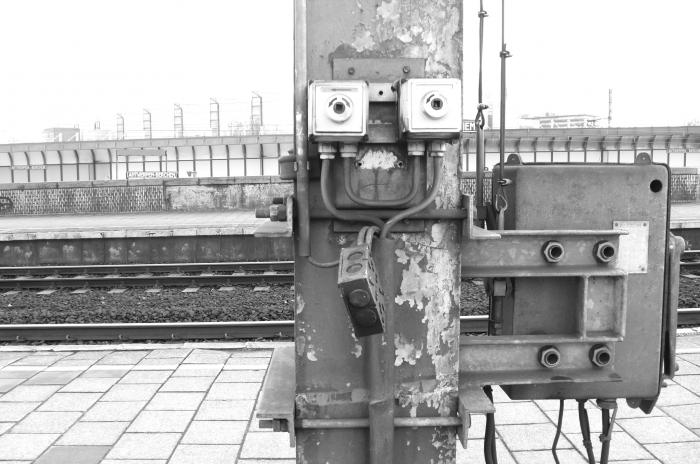
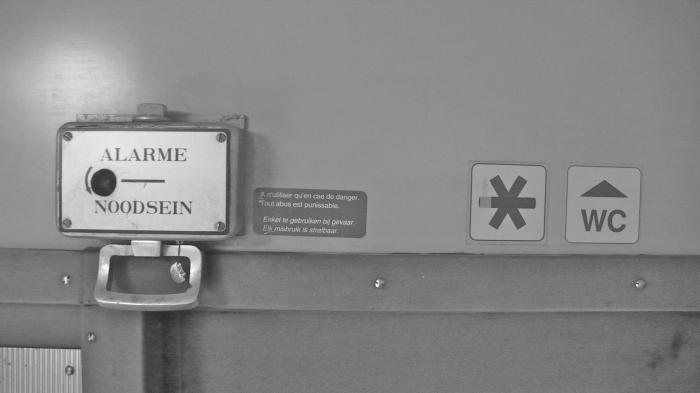
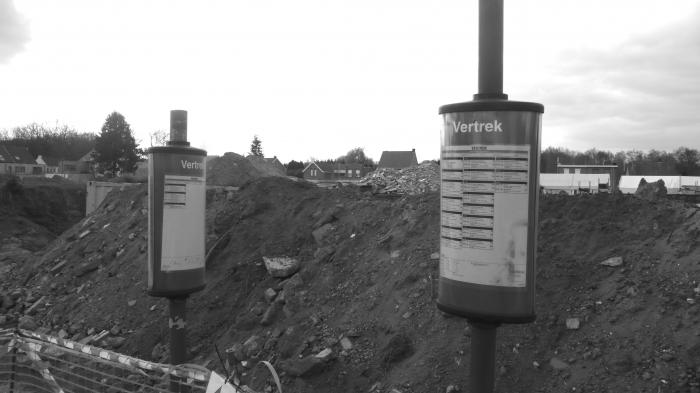
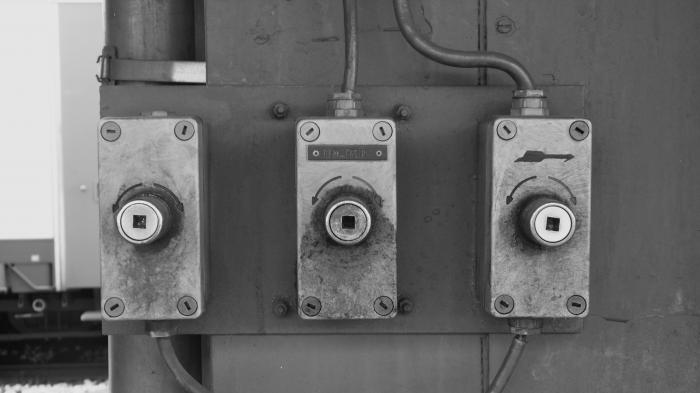
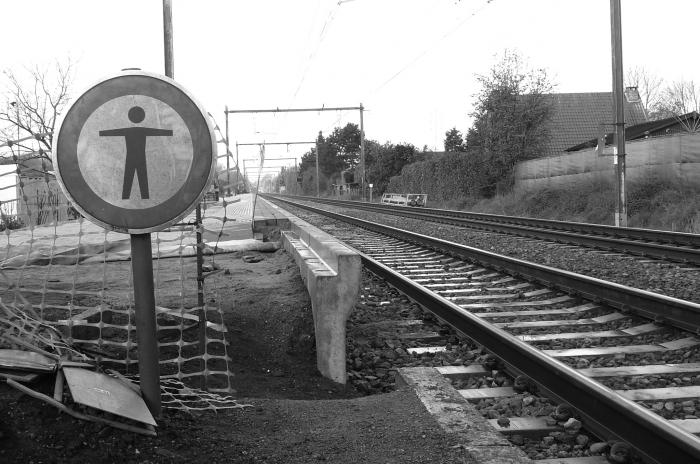
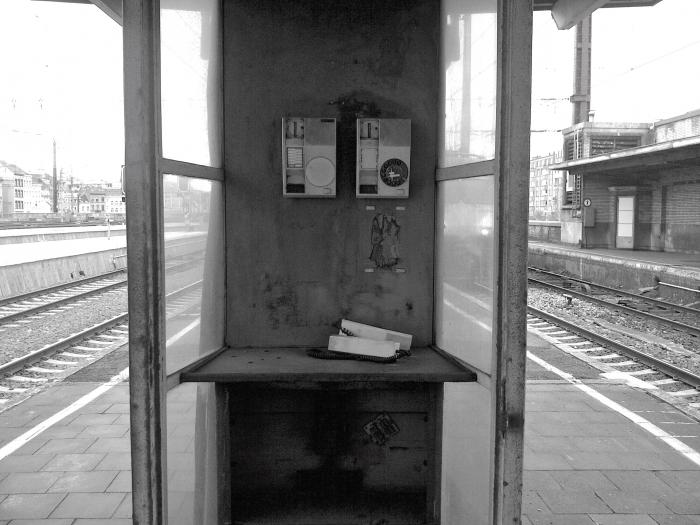 7
7
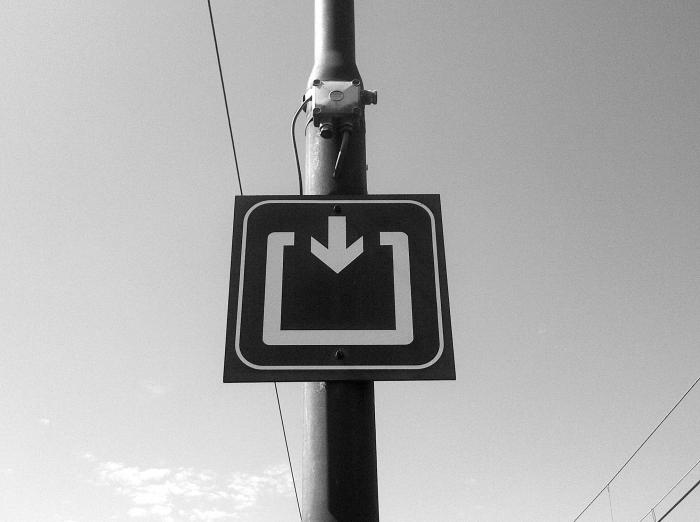 8
8
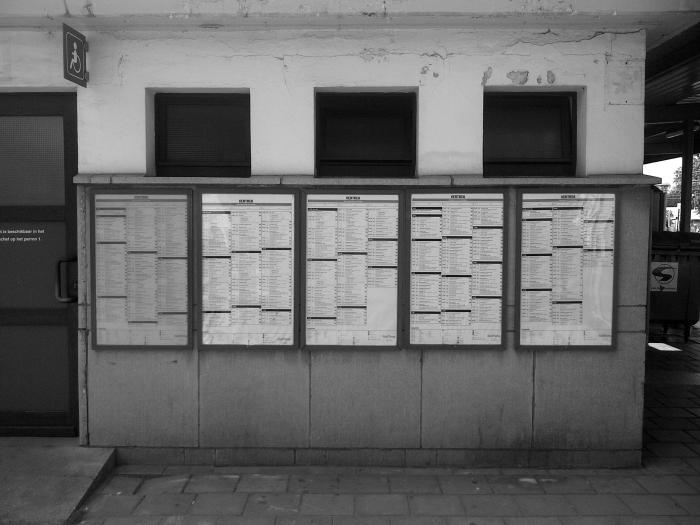 9
9
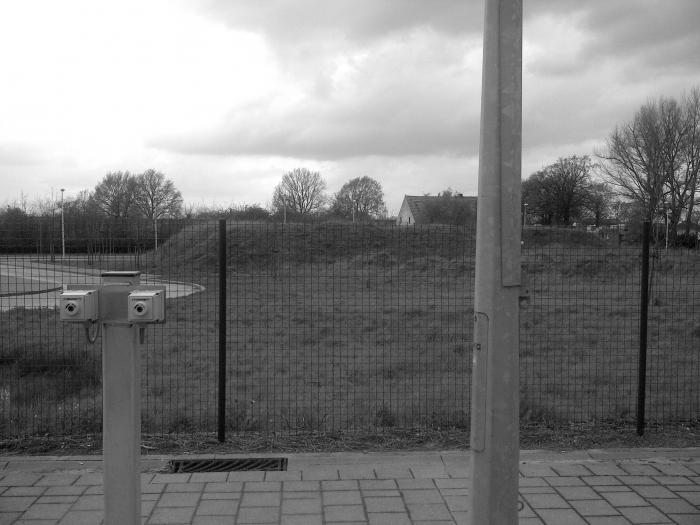 10
10
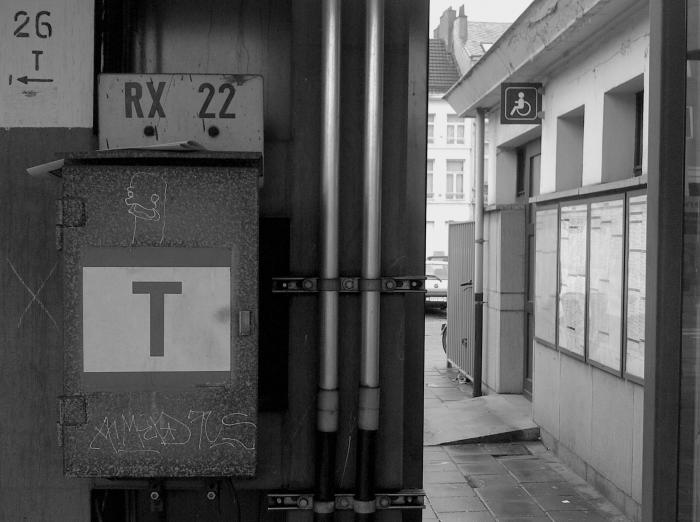 11
11
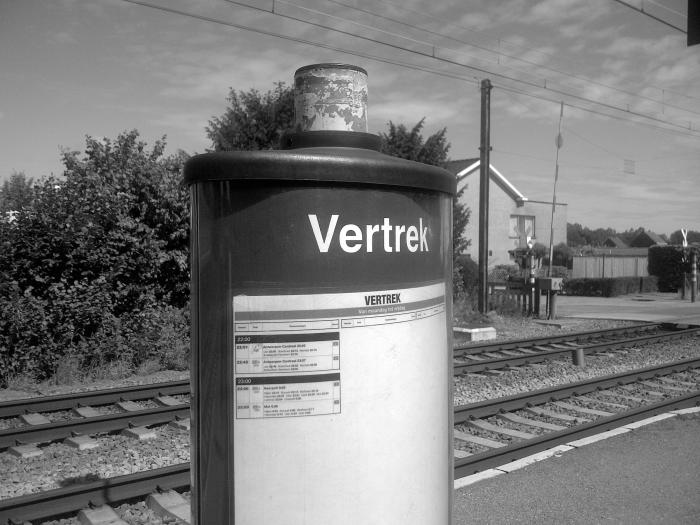 12
12
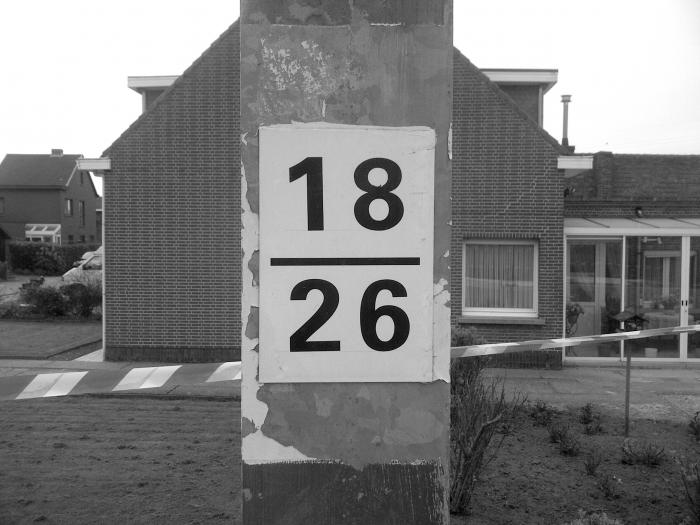 13
13
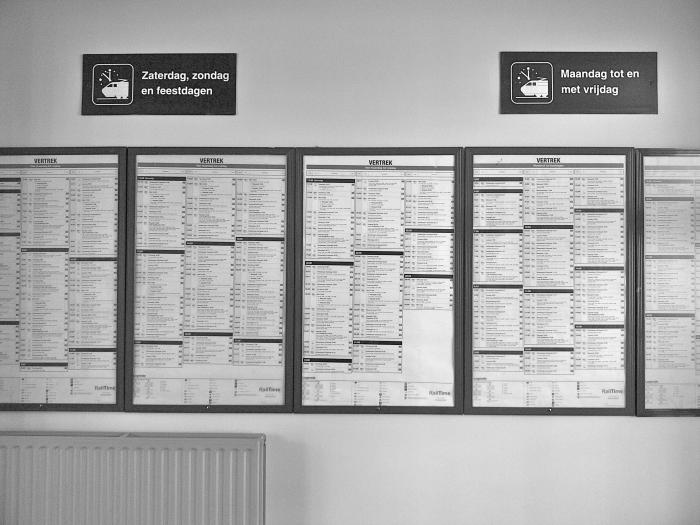 14
14
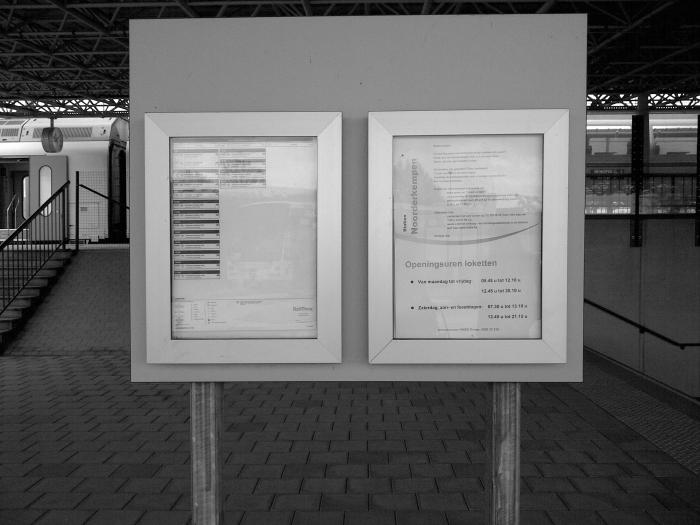 15
15
6024
*
P's
Parafrase: instrumentale fantasie over een bepaald thema.
Parallelle beweging: toonhoogten van twee of meer stemmen bewegen zich in dezelfde richting.
Parlando: sprekend zingen.
Pastorale: muziek met een landelijk karakter.
Pedaal: klavier van een orgel dat met de voeten wordt bespeeld. Deel van een piano dat met de voeten wordt gebruikt. Harp.
Pentatoniek: toonsysteem waarbij het octaaf is verdeeld in vijf toontrappen.
Percussie (f): slagwerk.
Pes: bestaat uit twee noten: een lagere en een hogere. De laagste wordt altijd eerst gezongen.
Piano: zacht, instrument.
Piu mosso: meer beweging.
Pizzicato: met vingers getokkeld.
Plagale modus/plagaal: de lage ligging van een kerktoon. (IV-I, harmonisch).
Plectrum: een klein hard voorwerp dat dient om snaarinstrumenten te bespelen. Als de snaren hiermee getokkeld worden geven ze een harder en/of scherper geluid.
Pluritonaal: muziek die op verschillende toonsoorten is gebaseerd.
Poco: beetje.
Poco a poco: beetje bij beetje.
Podatus: hetzelfde als pes. Bestaat uit twee noten: een lagere en een hogere. De laagste wordt altijd eerst gezongen.
Polyfonie: een manier van meerstemmig componeren waarbij de verschillende stemmen (melodieën) zo zelfstandig mogelijk optreden. Er is sprake van een polyfone compositie als verschillende melodieën tegelijk klinken en zich min of meer onafhankelijk van elkaar bewegen. Polyfone stijlen zijn bijvoorbeeld de canon en de fuga. Polymetriek: verschillende maatsoorten binnen een compositie.
Polyritmiek: verschillende ritmes binnen een compositie.
Polytonaal: het gelijktijdig voorkomen van verschillende toonsoorten binnen een compositie.
Porrectus: het tegenovergestelde van de torculus: hoog - laag - hoog.
Portato: gedragen (non-legato; staccato + boogje).
Presto: snel.
Prestissimo: uiterst snel.
Prestissimo possibile: zo snel als mogelijk.
Prime: een interval dat een frequentieverhouding van 1:1 heeft.
Psalmodie: zingend, meestal beurtelings reciteren van psalmen volgens vaste formules gebonden aan de kerktonen.
Punctum: enkelvoudige noten, die alleen of in combinatie met elkaar of met andere noten gebruikt.
Punteado: het tokkelen met de vingertoppen van de rechterhand op de snaren van een instrument.
Partitura: partituur.
Passionato: met passie.
Pausa: rust.
Penseroso: gedachtevol, meditatief.
Pesante: zwaar.
Piacere: naar eigen goeddunken.
Piacevole: aangenaam.
Piangevole: klagend.
Piccolo: klein.
Pietoso: meelijwekkend.
Postludium: instrumentaal naspel.
Piuttosto: tamelijk.
Placido: rustig, kalm.
Poetico: poëtisch.
Poi: dan, bijvoorbeeld in 'dal segno e poi Coda).
Pomposo: pralend, pompeus.
Praltriller: triller: genoteerde noot - halve of hele noot hoger - genoteerde noot.
Posato: neergezet.
Prima volta: de eerste keer.
Primo: de eerste.
http://nl.wikipedia.org/wiki/Lijst_van_Italiaanse_muziektermen
6344
PL-TABEL (duurtijden uitdoving van fosforescerende poeders. http://glowinc.com/glowinc.com/)

6108
VIDEO:
"Starting point"
5178
Nummers - Morse code - audio
nul
een
twee
drie
vier
vijf
zes
zeven
acht
negen
6064
Transformaties (1)
Transformaties op de wetenschappelijke tekst (fosforescentie):
Origineel - Spiegel - Spiegel en omkering - Piratentekst - Base 64 - Rot13 - Morse tekst - Ascii - Hexadecimaal - Binair - Morse - Braille












6068
TRANSFORMATIES (2):
"EXCERCISES"
P v P' v P"
"Acht Excercises" of "Acht Gedichten" of "Acht Composities", bevatten de eerste pogingen tot transformatie, binnen dit onderzoek.
* vertrek: samen, op fff.
* ontwikkeling: ritmes (in Morse-code) herhalen in aangegeven tempo, van fff naar pppp, en geleidelijk (over de volledige duurtijd) van pitch 1 naar pitch 2. (Morse: .=achtste noot, -=kwartnoot.)
* on cue (einde): samen, via een glissando, naar pitch B2-20cents, in ppppp, quasi niente.
* additieve informatie: Hex, Hex Spaced, Hex Dashed, Hex Encoded for URL.
De letters a, b, c, d, e, f (pitch) en nummers van 0 tot en met 9 (P-tabel).
* voor 8 altiviolen, of 8 violen, of ...
- Van Text naar Hex: http://www.swingnote.com/tools/texttohex.php
- Van Text naar ASCII: http://textop.us/Text-Convert/Ascii

SKLESE - 7:57
tempo: 57.7/kwartnoot
(... -.- .-.. . ... .) fff>pppp
(C2+25cents ---> C#2+20cents)
Hex:
534b4c455345
Hex Spaced:
53 4b 4c 45 53 45
Hex Dashed:
53-4b-4c-45-53-45
Hex Encoded for URL:
%53%4b%4c%45%53%45
ASCII:
083 075 076 069 083 069

RILE - 8:04
tempo: 80.4/kwartnoot
(.-. .. .-.. .) fff>pppp
(C2+50cents ---> D2+40cents)
Hex:
52494c45
Hex Spaced:
52 49 4c 45
Hex Dashed:
52-49-4c-45
Hex Encoded for URL:
%52%49%4c%45
ASCII:
082 073 076 069

LEEMCHEN ORKKELPENS - 8:19
tempo: 81.9/kwartnoot
(.-.. . . -- -.-. .... . -. / --- .-. -.- -.- . .-.. .--. . -. ...) fff>pppp
(C2+75cents ---> E2-40cents)
Hex:
4c45454d4348454e204f524b4b454c50454e53
Hex Spaced:
4c 45 45 4d 43 48 45 4e 20 4f 52 4b 4b 45 4c 50 45 4e 53
Hex Dashed:
4c-45-45-4d-43-48-45-4e-20-4f-52-4b-4b-45-4c-50-45-4e-53
Hex Encoded for URL:
%4c%45%45%4d%43%48%45%4e%20%4f%52%4b%4b%45%4c%50%45%4e%53
ASCII:
076 069 069 077 067 072 069 078 032 079 082 075 075 069 076 080 069 078 083

ENCHMEEL - 8:25
tempo: 82.5/kwartnoot
(. -. -.-. .... -- . . .-..) fff>pppp
(C#2 ---> F2-20cents)
Hex:
454e43484d45454c
Hex Spaced:
45 4e 43 48 4d 45 45 4c
Hex Dashed:
45-4e-43-48-4d-45-45-4c
Hex Encoded for URL:
%45%4e%43%48%4d%45%45%4c
ASCII:
069 078 067 072 077 069 069 076

DORLIVEVOR - 8:35
tempo: 83.5/kwartnoot
(-.. --- .-. .-.. .. ...- . ...- --- .-.) fff>pppp
(C#2+25cents ---> F#2)
Hex:
444f524c495645564f52
Hex Spaced:
44 4f 52 4c 49 56 45 56 4f 52
Hex Dashed:
44-4f-52-4c-49-56-45-56-4f-52
Hex Encoded for URL:
%44%4f%52%4c%49%56%45%56%4f%52
ASCII:
068 079 082 076 073 086 069 086 079 082

SELSBUR ORDON - 8:47
tempo: 84.7/kwartnoot
(... . .-.. ... -... ..- .-. / --- .-. -.. --- -.) fff>pppp
(C#2+50cents ---> G2+20cents)
Hex:
53454c53425552204f52444f4e
Hex Spaced:
53 45 4c 53 42 55 52 20 4f 52 44 4f 4e
Hex Dashed:
53-45-4c-53-42-55-52-20-4f-52-44-4f-4e
Hex Encoded for URL:
%53%45%4c%53%42%55%52%20%4f%52%44%4f%4e
ASCII:
083 069 076 083 066 085 082 032 079 082 068 079 078

LUBRESS TACALERN - 8:51
tempo: 85.1/kwartnoot
(.-.. ..- -... .-. . ... ... / - .- -.-. .- .-.. . .-. -.) fff>pppp
(C#2+75cents ---> G#2+40cents)
Hex:
4c55425245535320544143414c45524e
Hex Spaced:
4c 55 42 52 45 53 53 20 54 41 43 41 4c 45 52 4e
Hex Dashed:
4c-55-42-52-45-53-53-20-54-41-43-41-4c-45-52-4e
Hex Encoded for URL:
%4c%55%42%52%45%53%53%20%54%41%43%41%4c%45%52%4e
ASCII:
076 085 066 082 069 083 083 032 084 065 067 065 076 069 082 078

BRELSUR DIZU - 8:54
tempo: 85.4/kwartnoot
(-... .-. . .-.. ... ..- .-. / -.. .. --.. ..-) fff>pppp
(D2 ---> A#2-40cents)
Hex:
4252454c5355522044495a55
Hex Spaced:
42 52 45 4c 53 55 52 20 44 49 5a 55
Hex Dashed:
42-52-45-4c-53-55-52-20-44-49-5a-55
Hex Encoded for URL:
%42%52%45%4c%53%55%52%20%44%49%5a%55
ASCII:
066 082 069 076 083 085 082 032 068 073 090 085
6034
Transformaties (3)
Other transformations:
Caesar shifts, Vignère, Frequency analysis, Letter replacements, Transposition cipher, Affine cipher decryption.
1. CAESAR SHIFTS
Probably the simplest way of encrypting text is to use a simple shift of characters eg. A - > D, B -> E, C -> F and so forth. Such a shift is known as a Caesar cipher. This program will go through encrypted text and produce 26 separate texts that have been character shifted.
Original text - 15 chars.
fosfo resce ntie
Initialised text - 15 chars.
fosfo resce ntie
Processed text - shift 0
FOSFO RESCE NTIE
Processed text - shift 1
GPTGP SFTDF OUJF
Processed text - shift 2
HQUHQ TGUEG PVKG
Processed text - shift 3
IRVIR UHVFH QWLH
Processed text - shift 4
JSWJS VIWGI RXMI
Processed text - shift 5
KTXKT WJXHJ SYNJ
Processed text - shift 6
LUYLU XKYIK TZOK
Processed text - shift 7
MVZMV YLZJL UAPL
Processed text - shift 8
NWANW ZMAKM VBQM
Processed text - shift 9
OXBOX ANBLN WCRN
Processed text - shift 10
PYCPY BOCMO XDSO
Processed text - shift 11
QZDQZ CPDNP YETP
Processed text - shift 12
RAERA DQEOQ ZFUQ
Processed text - shift 13
SBFSB ERFPR AGVR
Processed text - shift 14
TCGTC FSGQS BHWS
Processed text - shift 15
UDHUD GTHRT CIXT
Processed text - shift 16
VEIVE HUISU DJYU
Processed text - shift 17
WFJWF IVJTV EKZV
Processed text - shift 18
XGKXG JWKUW FLAW
Processed text - shift 19
YHLYH KXLVX GMBX
Processed text - shift 20
ZIMZI LYMWY HNCY
Processed text - shift 21
AJNAJ MZNXZ IODZ
Processed text - shift 22
BKOBK NAOYA JPEA
Processed text - shift 23
CLPCL OBPZB KQFB
Processed text - shift 24
DMQDM PCQAC LRGC
Processed text - shift 25
ENREN QDRBD MSHD
FOSFO RESCE NTIE GPTGP SFTDF OUJF HQUHQ TGUEG PVKG IRVIR UHVFH QWLH JSWJS VIWGI RXMI KTXKT WJXHJ SYNJ LUYLU XKYIK TZOK MVZMV YLZJL UAPL NWANW ZMAKM VBQM OXBOX ANBLN WCRN PYCPY BOCMO XDSO QZDQZ CPDNP YETP RAERA DQEOQ ZFUQ SBFSB ERFPR AGVR TCGTC FSGQS BHWS UDHUD GTHRT CIXT VEIVE HUISU DJYU WFJWF IVJTV EKZV XGKXG JWKUW FLAW YHLYH KXLVX GMBX ZIMZI LYMWY HNCY AJNAJ MZNXZ IODZ BKOBK NAOYA JPEA CLPCL OBPZB KQFB DMQDM PCQAC LRGC ENREN QDRBD MSHD
2. VIGNERE
Vignère ciphertext can be difficult to decrypt. It is a combination of a Caesar shift combined with a keyword. The length of the keyword determines the number of different encryptions that are applied to the plaintext. For example, if the keyword is 4 chars in length then the plaintext is divided into 4 subtexts and a seperate Caesar shift is applied to each subtext depending on the value of the corresponding letter in the keyword. The cipher is polyalphabetic which means that a character can be enciphered in different ways. A frequency analysis of Vignère often shows a fairly balanced set of frequencies - because the keyword is used to switch between different cipher alphabets.
Charles Babbage worked out a method to decrypt this cipher.
- Look for sequences of letters that appear more than once in the ciphertext. These are likely to be the same sequences of plaintext letters that have been enciphered using the same parts of the key. However, a small number of the matching sequences may be purely random.
- Find the spacing between the repeated sequences. Try to find the common factor. This may suggest the length of the keyword.
- Create a subsets of characters based on the length of the keyword and do a separate frequency analysis on each of them. Compare each to a standard frequency distribution and try to match them up using the distribution peaks and troughs rather than an exact pattern matching. Find out the character shift which should give the keyword character eg. if shifted 4 places to the left then the letter is probably e.
This program uses a slightly shortened approach. If you don't enter in a keyword then it can break down the text into subtexts so that you can see whether a pattern is present. It will suggest a keyword. It assumes that the most common letter in the subtext is "e" which is not always the case.
- Subdivide the ciphertext into a number of subtexts which are then frequency analysed
- Assuming that the most common letter is e then it suggests a possible keyword and presents a decryption based on this
- You can then go back and try out different keywords and see the result
Suggested keyword is trein
fosfo resce ntie
14 chars
Substring 1
frn
Shift -19
MYU
Substring 2
oet
Shift -17
XNC
Substring 3
ssi
Shift -4
OOE
Substring 4
fce
Shift -8
XUW
Substring 5
oe
Shift -13
BR
Decrypted text
MXOXB YNOUR UCEW
19 chars
frn
MYU
oet
XNC
ssi
OOE
fce
XUW
oe
BR
MXOXB YNOUR UCEW
3. FREQUENTCY ANALYSIS
The transitions leading to phosphorescence. The first step, as in fluorescence, is the absorption 1A <--- 1X. Thermal degradation within the state 1A then occurs, and if it is not too fast, the spin-orbit coupling in the molecule might succeed in causing an intersystem crossing, a radiationless transition involving a change of multiplicity, into a nearby triplet state (perhaps arising from the same configuration as the excited singlet state), which we shell denote 3A. The crossing occurs in accord with the Franck-Condon principle, at the intersection of the molecular potential energy surfaces for the two electronic states, which is where the vibrational wavefunctions of the two electronic states match one another best. (In classical terms, at the intersection the oscillators share the same turning point.) This intersystem crossing takes place, thermal degradation will continue, but now the molecule is lowered down the stack of vibrational states of the triplet 3A and becomes trapped in the vibrational ground state. There is now little that the molecule can do. It cannot return to the ground state because singlet-triplet transitions are forbidden. It cannot return to 1A because it has insufficient energy. However, it is not quite true that the molecule can do nothing because the fact that intersystem crossing has occurred implies that the spin-orbit coupling is strong enough to mix states of different multiplicity, and hence the forbidden 3A ---> 1X transition is in fact weakly allowed. It follows that the system can slowly radiate its excess energy as the spin-orbit coupling enables this transition, and the photons produced are the radiation we call phosphorescence.
Removed spaces
1431 chars
a : 101 ... 7.1 %
b : 17 ... 1.2 %
c : 70 ... 4.9 %
d : 33 ... 2.3 %
e : 161 ... 11.3 %
f : 25 ... 1.7 %
g : 27 ... 1.9 %
h : 68 ... 4.8 %
i : 121 ... 8.5 %
j : 0 ... 0.0 %
k : 4 ... 0.3 %
l : 58 ... 4.1 %
m : 22 ... 1.5 %
n : 112 ... 7.8 %
o : 99 ... 6.9 %
p : 29 ... 2.0 %
q : 1 ... 0.1 %
r : 79 ... 5.5 %
s : 104 ... 7.3 %
t : 171 ... 11.9 %
u : 34 ... 2.4 %
v : 7 ... 0.5 %
w : 20 ... 1.4 %
x : 5 ... 0.3 %
y : 12 ... 0.8 %
z : 0 ... 0.0 %
Letter frequencies
t : 171
e : 161
i : 121
n : 112
s : 104
a : 101
o : 99
r : 79
c : 70
h : 68
l : 58
u : 34
d : 33
p : 29
g : 27
f : 25
m : 22
w : 20
b : 17
y : 12
v : 7
x : 5
k : 4
q : 1
z : 0
j : 0
2 letter sequences
th => 48
he => 40
in => 37
st => 28
at => 28
on => 27
te => 26
es => 25
ti => 24
it => 22
le => 22
et => 20
an => 19
si => 19
er => 19
ec => 18
nt => 18
ng => 17
io => 17
en => 16
ra => 16
tr => 15
re => 13
no => 12
or => 12
ce => 12
ca => 11
ro => 11
ns => 11
pl => 11
ta => 11
is => 11
3 letter sequences
the => 37
ion => 17
tio => 17
ing => 15
sin => 13
4 letter sequences
tion => 17
4. LETTER REPLACEMENT
The transitions leading to phosphorescence. The first step, as in fluorescence, is the absorption 1A <--- 1X. Thermal degradation within the state 1A then occurs, and if it is not too fast, the spin-orbit coupling in the molecule might succeed in causing an intersystem crossing, a radiationless transition involving a change of multiplicity, into a nearby triplet state (perhaps arising from the same configuration as the excited singlet state), which we shell denote 3A. The crossing occurs in accord with the Franck-Condon principle, at the intersection of the molecular potential energy surfaces for the two electronic states, which is where the vibrational wavefunctions of the two electronic states match one another best. (In classical terms, at the intersection the oscillators share the same turning point.) This intersystem crossing takes place, thermal degradation will continue, but now the molecule is lowered down the stack of vibrational states of the triplet 3A and becomes trapped in the vibrational ground state. There is now little that the molecule can do. It cannot return to the ground state because singlet-triplet transitions are forbidden. It cannot return to 1A because it has insufficient energy. However, it is not quite true that the molecule can do nothing because the fact that intersystem crossing has occurred implies that the spin-orbit coupling is strong enough to mix states of different multiplicity, and hence the forbidden 3A ---> 1X transition is in fact weakly allowed. It follows that the system can slowly radiate its excess energy as the spin-orbit coupling enables this transition, and the photons produced are the radiation we call phosphorescence.
(In onderstaande tabel heb ik de symbolen ingevuld, die nog enige uiterlijke verwantschap vertonen met de letter in kwestie.)


5. TRANSPOSITION CIPHER
Transposition (or anagram) ciphers are where the letters are jumbled up together. Instead of replacing characters with other characters, this cipher just changes the order of the characters. This means that the giveaway for a transposition cipher is that frequency analysis shows that the constituent letters are what would be expected in a standard text (eg. e is the most common English letter). What typically happens is that the text to be encrypted is arranged in a number of columns. These columns are then reordered resulting in encrypted text eg. (1, 2, 3, 4, 5) -> (4, 5, 3, 2, 1). To decrypt you need to workout the number of columns - this is usually based on a common factor of the total number of characters in the text - and then rearrange the columns. Easier said than done.
Removed spaces
fosfo resce ntie
There are 14 chars in this text.
The no of columns are probably a factor of this number 14
How many columns ? <= 10
10!
Look for any patterns in this text. Are there any letter combinations that suggest a reordering of columns? You will need to put the new column orders in the input boxes below. Eg. If you want column 4 first followed by column 2, 3 and then 1 then you enter 4 2 3 1

Encrypted text
fosforesce ntie
Decrypted text
end 1.4coeserffso inet
6. AFFINE CIPHER DECRYPTION
Many ciphers are automated and rely on a mathematical encryption algorithm. One common class of letter shift ciphers is known as the affine shift cipher. It uses the form x -> 3x + 5 where the numbers can vary. The aim is that by knowing the letter substitutions for 2 letters then we can solve the 2 simultaneous equations. However, this means division in modulus maths - which may not be possible if a multiplicative inverse cannot be found. So you may need to try a few characters before this works.
The box below contains example encrypted text. You can paste the text that you want to decipher over this example text. Then fill in your replacement letters.

The t ransi tions lead ing t o pho sphor escen ce. T he fi rst s tep, as in fluo resce nce, is th e abs orpti on 1A <--- 1X. Therm al de grada tion withi n the stat e 1A then occur s, an d if it is not too f ast, the s pin-o rbit coupl ing i n the mole cule might succ eed i n cau sing an in tersy stem cross ing, a rad iatio nless tran sitio n inv olvin g a c hange of m ultip licit y, in to a nearb y tri plet state (per haps arisi ng fr om th e sam e con figur ation as t he ex cited sing let s tate) , whi ch we shel l den ote 3 A. Th e cro ssing occu rs in acco rd wi th th e Fra nck-C ondon prin ciple , at the i nters ectio n of the m olecu lar p otent ial e nergy surf aces for t he tw o ele ctron ic st ates, whic h is where the vibra tiona l wav efunc tions of t he tw o ele ctron ic st ates match one anoth er be st. ( In cl assic al te rms, at th e int ersec tion the o scill ators shar e the same turn ing p oint. ) Thi s int ersys tem c rossi ng ta kes p lace, ther mal d egrad ation will cont inue, but now t he mo lecul e is lower ed do wn th e sta ck of vibr ation al st ates of th e tri plet 3A an d bec omes trapp ed in the vibra tiona l gro und s tate. Ther e is now l ittle that the molec ule c an do . It canno t ret urn t o the grou nd st ate b ecaus e sin glet- tripl et tr ansit ions are f orbid den. It ca nnot retur n to 1A be cause it h as in suffi cient ener gy. H oweve r, it is n ot qu ite t rue t hat t he mo lecul e can do n othin g bec ause the f act t hat i nters ystem cros sing has o ccurr ed im plies that the spin- orbit coup ling is st rong enoug h to mix s tates of d iffer ent m ultip licit y, an d hen ce th e for bidde n 3A ---> 1X tr ansit ion i s in fact weakl y all owed. It f ollow s tha t the syst em ca n slo wly r adiat e its exce ss en ergy as th e spi n-orb it co uplin g ena bles this trans ition , and the photo ns pr oduce d are the radia tion we ca ll ph ospho resce nce.
p -> ~p
q -> p
a.16 + b = -26
a.17 + b = 16
These simultaneous equations solve to...
1.a = 42 mod 26
The affine shift is x -> 16x + 4
a -> T
b -> J
c -> Z
d -> P
e -> F
f -> V
g -> L
h -> B
i -> R
j -> H
k -> X
l -> N
m -> D
n -> T
o -> J
p -> Z
q -> P
r -> F
s -> V
t -> L
u -> B
v -> R
w -> H
x -> X
y -> N
z -> D
Processed text
TBF L FTTVR LRJTV NFTP RTL L J ZBJ VZBJF FVZFT ZF. T BF VR FVL V LFZ, TV RT VNBJ FFVZF TZF, RV LB F TJV JFZLR JT 1A <--- 1X. TBFFD TN PF LFTPT LRJT HRLBR T LBF VLTL F 1A LBFT JZZBF V, TT P RV RL RV TJL LJJ V TVL, LBF V ZRT-J FJRL ZJBZN RTL R T LBF DJNF ZBNF DRLBL VBZZ FFP R T ZTB VRTL TT RT LFFVN VLFD ZFJVV RTL, T FTP RTLRJ TNFVV LFTT VRLRJ T RTR JNRRT L T Z BTTLF JV D BNLRZ NRZRL N, RT LJ T TFTFJ N LFR ZNFL VLTLF (ZFF BTZV TFRVR TL VF JD LB F VTD F ZJT VRLBF TLRJT TV L BF FX ZRLFP VRTL NFL V LTLF) , HBR ZB HF VBFN N PFT JLF 3 A. TB F ZFJ VVRTL JZZB FV RT TZZJ FP HR LB LB F FFT TZX-C JTPJT ZFRT ZRZNF , TL LBF R TLFFV FZLRJ T JV LBF D JNFZB NTF Z JLFTL RTN F TFFLN VBFV TZFV VJF L BF LH J FNF ZLFJT RZ VL TLFV, HBRZ B RV HBFFF LBF RRJFT LRJTT N HTR FVBTZ LRJTV JV L BF LH J FNF ZLFJT RZ VL TLFV DTLZB JTF TTJLB FF JF VL. ( IT ZN TVVRZ TN LF FDV, TL LB F RTL FFVFZ LRJT LBF J VZRNN TLJFV VBTF F LBF VTDF LBFT RTL Z JRTL. ) TBR V RTL FFVNV LFD Z FJVVR TL LT XFV Z NTZF, LBFF DTN P FLFTP TLRJT HRNN ZJTL RTBF, JBL TJH L BF DJ NFZBN F RV NJHFF FP PJ HT LB F VLT ZX JV RRJF TLRJT TN VL TLFV JV LB F LFR ZNFL 3A TT P JFZ JDFV LFTZZ FP RT LBF RRJFT LRJTT N LFJ BTP V LTLF. TBFF F RV TJH N RLLNF LBTL LBF DJNFZ BNF Z TT PJ . IL ZTTTJ L FFL BFT L J LBF LFJB TP VL TLF J FZTBV F VRT LNFL- LFRZN FL LF TTVRL RJTV TFF V JFJRP PFT. IL ZT TTJL FFLBF T LJ 1A JF ZTBVF RL B TV RT VBVVR ZRFTL FTFF LN. H JHFRF F, RL RV T JL PB RLF L FBF L BTL L BF DJ NFZBN F ZTT PJ T JLBRT L JFZ TBVF LBF V TZL L BTL R TLFFV NVLFD ZFJV VRTL BTV J ZZBFF FP RD ZNRFV LBTL LBF VZRT- JFJRL ZJBZ NRTL RV VL FJTL FTJBL B LJ DRX V LTLFV JV P RVVFF FTL D BNLRZ NRZRL N, TT P BFT ZF LB F VJF JRPPF T 3A ---> 1X LF TTVRL RJT R V RT VTZL HFTXN N TNN JHFP. IL V JNNJH V LBT L LBF VNVL FD ZT T VNJ HNN F TPRTL F RLV FXZF VV FT FFLN TV LB F VZR T-JFJ RL ZJ BZNRT L FTT JNFV LBRV LFTTV RLRJT , TTP LBF ZBJLJ TV ZF JPBZF P TFF LBF FTPRT LRJT HF ZT NN ZB JVZBJ FFVZF TZF.
Transformaties: converters.
spiegel: http://www.typemirror.com/reverse.php
spiegel en omgekeerd: http://www.fliptext.org/
piratentekst: http://www.cafewebmaster.com/online_tools/backwards_mirrored_text
Base 64 encode: http://www.cafewebmaster.com/online_tools/backwards_mirrored_text
Morse code (tekst): http://www.qbit.it/lab/morse.php?text=ann&midi=1
Braille: http://www.cbm.de/dynamic/Standard_157654.html?bannerId=607
Ascii: http://textop.us/Text-Convert/Ascii
Text to image: http://www.text-image.com/convert/pic2ascii.cgi
Convert Binary with http://www.ConvertBinary.com
Hexadecimaal, Base64, Decimaal, Rot13: http://www.asciitohex.com/
QR-code: http://qrcode.kaywa.com/
Ascii Generator: http://www.network-science.de/ascii/
http://www.richkni.co.uk/php/crypta/caesar.php
Van Text naar Hex: http://www.swingnote.com/tools/texttohex.php
Van Text naar ASCII: http://textop.us/Text-Convert/Ascii
Teksteditor:
TR 1 EngraverFontSet
TR1muz EngraverTextNCS

